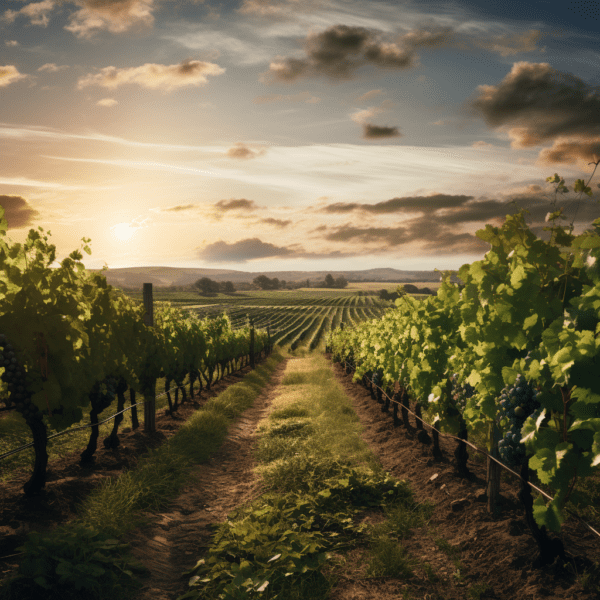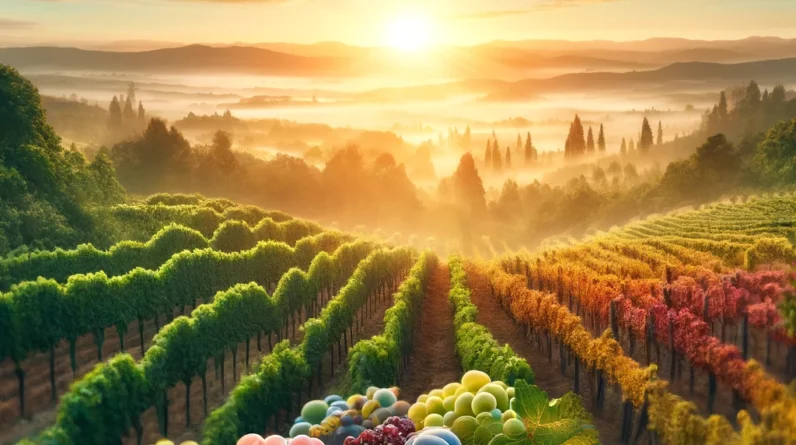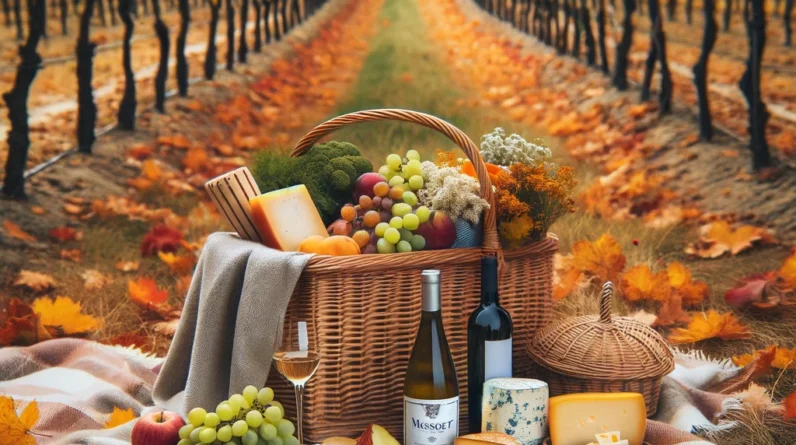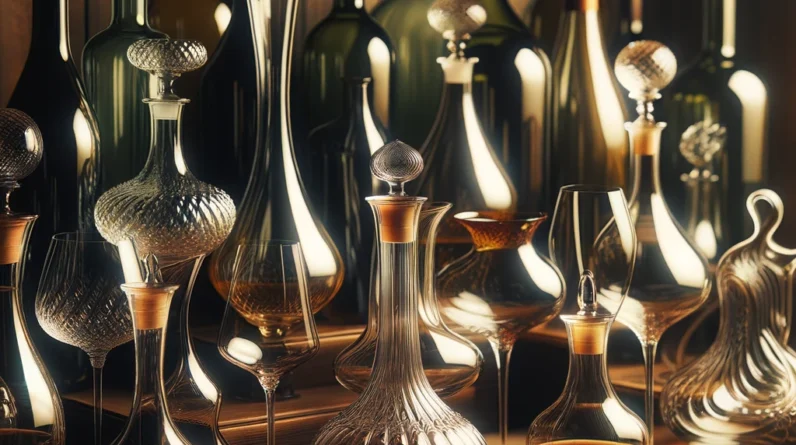
You’re standing at the brink of an exquisite journey, about to dip your toes into the world of wines.
From the vineyards of Italy to the cellars of France, you’ll soon realize there’s a myriad of tastes and experiences waiting for you.
Understanding the Beginner’s Palate
Remember your first sip of coffee or tea?
It probably tasted different than it does now.
Similarly, as a newbie, wines might taste too robust or too subtle.
Over time, your palate will mature and appreciate varied nuances.
Setting the Stage for the Journey into Wines
Think of wines as stories bottled up, waiting to be read.
Each sip reveals character, background, and a hint of mystery.
But as with any tale, understanding the context is key.
Starting Your Wine Journey: Tips to Keep in Mind
Embracing Experimentation and Trying New Wines
Stay curious.
Every bottle of wine offers a new experience.
Even if you find a favorite early on, keep exploring.
That’s the joy of this journey.
The Importance of Taking Notes and Tracking Preferences
It might seem trivial now, but noting what you liked (or didn’t) about a wine can be invaluable.
Over time, you’ll see patterns and preferences emerge.

Engaging with Experts: Asking Questions and Seeking Advice
Never hesitate to ask.
Whether it’s a sommelier, a friend, or an online community, gaining insights from those more knowledgeable will only enhance your wine journey.
Leveraging Virtual Wine Tastings for a Broadened Experience
Yes, virtual!
Especially now, many wineries and experts offer virtual tastings, allowing you to explore global flavors from your living room.
Diving into the World of Wine Regions
Every region has its own story.
The soil, climate, and traditions shape each wine uniquely.
By exploring different regions, you embrace a diverse array of narratives.

Connecting Wine with Memorable Experiences
Be it a serene evening or a celebratory toast, wine has the magic to elevate moments.
Let every bottle be a memory or an anecdote waiting to be shared.
What White Wines are Best for Beginners?
Vinho Verde: A Refreshing Start with Portuguese Flavors
Light. Breezy.
Almost like the Portuguese coast in a bottle.

Vinho Verde is often termed as a delightful entryway into the vast realm of wines.
Originating from Portugal, it sets itself apart not just with its name, which translates to “green wine,” but also with its unique characteristics.
Vinho Verde wines possess a high acidity and are generally on the drier side.
Their light body makes them an easy choice for those just starting their wine journey.
But perhaps the most distinctive quality of Vinho Verde is its effervescence.
This slight bubbly sensation adds a layer of freshness and zest, making it a popular choice, especially during warm days.
Historically, this effervescence was a natural outcome of the fermentation process, especially during bottling.
But as winemaking techniques evolved, carbon dioxide began to be introduced to give Vinho Verde its signature bubbles.
This modern method ensures a consistent bubbly experience across bottles.
In essence, if you’re seeking a wine that is easy on the palate, refreshing, and offers a delightful bubbly twist, Vinho Verde is the perfect choice.
The Portuguese really did gift the world a wine that beautifully embodies the breezy and vibrant ambiance of their coastline.
Pinot Grigio: The Simplistic Pleasure of Italian Wines
When in doubt, Pinot Grigio.
An evergreen favorite, it’s light and effortlessly sophisticated.

Ah, Pinot Grigio!
As you delve deeper into the world of wines, this is a name you’ll encounter frequently.
It is one of those quintessential wines that charms both beginners and connoisseurs alike.
While Pinot Grigio finds its roots in two primary regions – France and Italy – it’s intriguing how each region lends a different touch to this varietal.
However, regardless of the region, there is a common thread that binds them: their characteristic dryness.
For those with a preference for sweeter notes, this might come as a surprise, but the high acidity and dry profile of Pinot Grigio are precisely what make it a favorite among many.
On sipping, the fruity symphony of flavors emerges instantly.
Vibrant notes of lime, green apple, and lemon dance on the tongue.
They’re gracefully followed by softer notes of pear and nectarine.
Yet, what really adds depth to this wine are its hints of floral, spicy, and salty tones.
Diving into regional variations, the Italian versions of Pinot Grigio often stand out with their drier and slightly bitter profile.
In contrast, the French renditions, while retaining the dryness, introduce a gentle sweetness, reminiscent of honey.
This subtle distinction between the Italian and French Pinot Grigio showcases the magic of terroir, where the same grape expresses itself differently based on its geographical upbringing.
In essence, Pinot Grigio is like a timeless piece of art.
Depending on where you view it from, you’ll notice new facets, new nuances, and new tales.
It’s a journey that’s as intriguing as it is delightful.
Haven’t found that perfect white wine glass yet?
Sancerre: An Elegant Journey with Sauvignon Blanc from the Loire Valley
It’s Sauvignon Blanc but with a French twist.
Sancerre offers a perfectly balanced sip every time.

Sancerre. Just whispering the name evokes images of sun-kissed vineyards stretched across the heart of France.
Situated in the picturesque Loire Valley, Sancerre is not merely a region; it is a badge of quality, an emblem of French winemaking heritage.
For those not intimately acquainted with the complex tapestry of French wines, Sancerre stands as the flagship of French Sauvignon Blanc.
But what truly makes a wine from this appellation stand out from its counterparts?
Geography and climate play pivotal roles.
The region boasts rolling limestone hills, a unique feature that imparts a distinct minerality to its wines.
This combined with its semi-continental climate creates a wine that is both robust in character and elegant in its subtlety.
One whiff and the ripe gooseberry aromas envelop you, signaling the intricate journey you are about to embark upon with each sip.
On the palate, the bracing acidity makes its presence felt immediately, bringing vibrancy and zest.
But the true surprise lies in the nuanced, flinty-smoke flavors that linger, an ode to the terroir from which it springs.
Sancerre, in its essence, offers a masterclass on how a region’s geography and climate can elevate a grape variety to its most expressive and sophisticated form.
It is a testament to the harmonious blend of nature’s bounty and man’s craftsmanship.
As you explore the world of wines, Sancerre is a chapter you wouldn’t want to miss.
Vermentino: The Island Wine of Sardinia and Beyond
Imagine sun-soaked island terrains, and the taste?
Vibrant tropical flavors that dance on the palate.

Imagine the Mediterranean coast: sun-soaked shores, a gentle breeze carrying the scent of the sea, and, perhaps, a chilled glass of Vermentino in hand.
This wine captures the essence of its birthplace, serving as a delightful testament to the magic of the Mediterranean terroir.
Originating from the shores of Italy, Vermentino is not just another white wine.
It is an experience, a taste of the coastal life.
While it is light-bodied, there’s nothing ‘light’ about its character.
Every sip carries the weight of its robust flavors and unique texture.
Its high acidity, combined with minimal sweetness, gifts it a noteworthy dryness, making it a standout among whites.
But what truly intrigues the palate is the wine’s inherent bitterness.
It’s this quality that makes it an excellent companion for a wide range of dishes, from seafood delicacies to rich, creamy pastas.
Yet, as you take a moment to savor it, you might notice something unexpected—an oily texture, contrasting yet complementing the sharp acidity.
This oily mouthfeel is a signature of Vermentino, a trait that often leaves wine enthusiasts intrigued and eager for another sip.
Dive deeper into its flavor profile, and the symphony unfolds.
You are first greeted by pronounced notes of pears, limes, and the refreshing tang of grapefruit.
The tartness of Granny Smith apples follows suit, adding another layer of complexity.
As you swirl and sip, you might find your senses serenaded by the floral whispers of daffodils and the nutty undertone of almonds.
In essence, Vermentino offers a holistic Mediterranean experience—rich in flavors, varied in textures, and endlessly fascinating.
As you embark on your wine journey, let this be your invitation to the sun-kissed shores of Sardinia and beyond.
Grenache Blanc: Exploring the Floral and Fruity Side of Spain and Beyond
Spain serves a delightful bouquet in the form of Grenache Blanc.
Each sip feels like a soft summer day.

Picture this: the sun-drenched terrains of Spain, dotted with grapevines swaying gently in the Mediterranean breeze.
Among them, stands a resilient variety – the Grenache Blanc.
At its essence, Grenache Blanc (often called Garnacha Blanca in its native land) is an intriguing wine varietal with rich roots.
It shares its genetic makeup with the much-celebrated red Grenache, or Grenache Noir.
However, this white counterpart has an identity distinctly its own.
When one thinks of Grenache Blanc, the descriptors that often come to mind are its high alcohol content paired with a surprisingly low acidity.
As you pour a glass, the aroma wafts up, hinting at herbaceous undertones with a touch of citrus.
When sipped, this wine reveals itself in layers.
It is medium to full-bodied, and depending on its aging process, can either have the crispness of unoaked purity or the depth and richness that come from oak aging.
The versatility doesn’t end here.
Grenache Blanc is a sociable varietal.
It’s often blended with other notable varietals, notably Viognier and, more commonly, Roussanne.
This mingling is more than just about adding volume; it’s about enhancing flavor and complexity, giving the wine an edge that’s both refreshing and profound.
One of the most commendable attributes of the Grenache Blanc grape is its hardiness.
This is a grape that doesn’t cower in the face of adversity.
Whether it’s the sweltering heat or drought-like conditions, Grenache Blanc not only survives but thrives, producing grapes that reflect its tenacity in their robust flavors.
Historically, while the vines first sprouted in the soils of Spain, it’s France that truly embraced Grenache Blanc, making it its own.
The Rhône Valley, with its iconic Chateauneuf-du-Pape, stands as a testament to the grape’s significance.
However, the Languedoc-Roussillon region has been instrumental in showcasing Grenache Blanc’s potential, especially in blended white wines.
Today, it stands proud as one of the top five white wine grape varietals in terms of production in France.
In the grand tapestry of wines, Grenache Blanc holds its own thread – a tale of resilience, versatility, and undeniable charm, a testament to its Spanish origins and French evolution.
Whether you’re a wine novice or a seasoned enthusiast, Grenache Blanc promises a sip that’s both a history lesson and a sensory delight.
Prosecco: Celebrating with the Bubbles of Northern Italy
Pop a bottle, and let the Italian bubbles enchant you.
Prosecco is the epitome of celebration.

Ah, the allure of sparkling wine!
There’s nothing quite like the pop of a cork followed by the effervescent fizz filling a flute.
For many, this sensation is synonymous with Champagne.
And while there’s no denying the prestigious legacy of Champagne, its price often relegates it to the shelves for special occasions only.
Enter Prosecco, the effervescent counterpart from Italy, offering all the joys of sparkling wine without burning a hole in your pocket.
Prosecco primarily uses the Glera grape, giving it a distinct fruity profile.
Prosecco is produced using the “Tank Method”.
In this method, once sugar and yeast are introduced, the wine is fermented in large tanks.
This not only makes the process quicker and more economical but also influences the final taste profile of the wine.
Absent from Prosecco is the yeasty taste often associated with Champagne.
When you take a sip of Prosecco, expect a fresher, fruitier note, less of that toasty quality of Champagne, but all the joy of effervescence.
So the next time you’re in the mood for some bubbles without the Champagne price tag, raise a toast to Prosecco, a sparkling testament to Italy’s winemaking prowess.
Whether it’s a toast to a special occasion or just the end of a long day, Prosecco ensures every moment can be celebrated in style.
What Red Wines are Best for Beginners?
Gamay: Relishing the Light and Fruity French Delight
It’s France on a lazy Sunday afternoon.
Light, fruity, and absolutely delightful.

Are you the kind who can’t resist the scent of the flowers during your neighborhood strolls?
Or perhaps, when wandering in a forest, do you find yourself taking deep breaths, soaking in the rich, earthy aroma?
If yes, then you, my friend, are the perfect candidate for a bottle of Gamay.
Though it’s worth noting, such indulgences make you quite the unique individual.
Not many pause long enough to truly appreciate these little joys of life.
Gamay, pronounced “Gam-may” and also known as Gamay Noir, is a wine that might just resonate with your nature-loving soul. Its profile?
A light-bodied red that’s eerily reminiscent of the beloved Pinot Noir.
Digging a bit into its lineage, Gamay is, in fact, a cousin to Pinot Noir.
And where does this wine find its roots?
Right beside Burgundy, France – the homeland of Pinot – in the picturesque Beaujolais region.
Gamay wines are often celebrated for their delicate floral fragrances (think of the roses and violets you love) and their subtle, underpinning earthy tones.
But what surprises many is Gamay’s versatility – this wine can gracefully accompany a plate of sushi or grilled fish.
Now, for the cherry on top: Quality Gamay often comes without the hefty price tag of a Pinot Noir.
Yes, you can savor the nuances of a sophisticated red without burning a hole in your pocket.
For those keen on embarking on a Gamay journey, it’s essential to recognize its growing influence.
This wine variety has been quietly but steadily gaining traction not just in its French homeland but also in other cool-climate regions.
You’ll find noteworthy Gamays in the vineyards of Canada, Switzerland, the cooler parts of Oregon in the US, and the far-off terrains of New Zealand.
In essence, if you’re looking for a wine that mirrors the depths and sensitivities of an individual who pauses to appreciate nature’s beauty, Gamay is your answer.
Pour yourself a glass, breathe in its fragrant notes, and let it whisk you away to the verdant landscapes of Beaujolais.
Cheers to finding a wine that truly understands you!
Merlot: Savoring the Global Favorite’s Subtle Charms
Merlot doesn’t shout; it whispers.
Its subtle charm lies in its understated elegance.

So, you’ve decided to delve into the world of red wines?
Welcome! As you embark on this vinous journey, there’s no better introductory companion than Merlot.
Why, you ask?
Merlot, with its velvety black plum and black cherry notes, is not just a global favorite for its flavors.
It’s the gentle introduction to red wines that doesn’t overwhelm the beginner’s palate.
Think of Merlot as the inviting, soft-spoken friend in a gathering – it brings everyone together, offering a medium-bodied, well-balanced presence that fills your mouth with a feeling of warmth and sophistication.
If you’re shopping in the US, you’ll come across Merlots from renowned regions like Napa, Monterey, Paso Robles, and the expansive Central Valley.
Often, Merlot is the unsung hero in those red blend table wines where the grape varieties remain a mystery.
Additionally, the cooler climates of southern Oregon and eastern Washington also nurture this red grape, giving it a unique twist.
Now, if you find yourself staring at a French wine shelf, look for bottles labeled from Bordeaux, especially those from the Right Bank appellations.
Here, Merlot shines bright, playing a dominant role. But a word of caution for beginners – Bordeaux wines can be a tad complex, given the intricacies of French wine labeling.
If you’re new to this, the best approach would be to seek guidance. Walk into a local wine shop, flash your most endearing smile, and simply request a “Right Bank Bordeaux”.
Trust us; the result will be worth the effort.
Venturing outside the US and France, don’t miss out on the Merlots from Chile.
These are like hidden gems – affordable, impeccably crafted, and a perfect representation of what Merlot stands for.
Especially for those just beginning to acquaint themselves with this red grape, Chilean Merlots offer a delightful starting point.
They capture the essence of Merlot in a bottle, making them both wallet-friendly and palate-pleasing.
So, the next time you’re exploring wines, let Merlot be your trusted guide.
Cheers to new beginnings and timeless classics!
Still looking for the best red wine glass? I’ve found mine!
Cabernet Sauvignon: The Global Powerhouse from Vineyards Near and Far
Imagine a red that’s loved everywhere.
That’s Cabernet Sauvignon for you.
Robust and full of character.

Often abbreviated to “Cab Sav,” Cabernet Sauvignon is undeniably one of the world’s most recognized red wines.
But when we talk about beginner-friendly wines, this esteemed grape variety finds itself at the tail end. It’s almost paradoxical, isn’t it?
How can a wine so iconic, and sometimes exorbitantly priced, be challenging for newbies?
Cabernet Sauvignon is like that rich, dark chocolate cake with layers of deep flavors that not everyone can instantly appreciate.
Its full-bodied nature combined with high tannin and acidity levels lends it a boldness that can sometimes overpower the unaccustomed palate.
Those rich notes of black currant, the hint of refreshing mint, the undertones of velvety dark chocolate, and the smoky whispers – while heavenly for some – can be a tad too intense for others.
One of the key challenges with Cabernet Sauvignon, especially when the grapes are underripe, is the inadvertent presence of green bell pepper flavor.
For many aficionados, this unique characteristic might be a delightful complexity.
But let’s face it, not everyone wants their wine to remind them of salad ingredients.
Yet, despite its daunting characteristics for new wine enthusiasts, dismissing Cabernet Sauvignon altogether would be a misstep.
It’s ubiquitous.
Whether you’re at a high-end restaurant, a friend’s dinner party, or simply browsing wine aisles, you’ll inevitably encounter this red giant.
The advice here is not to dive headfirst into the deep end of the Cabernet pool, but rather to dip your toes in.
As your palate matures, you might just find yourself falling in love with the very characteristics that once seemed daunting.
After all, Cabernet Sauvignon didn’t earn its stellar reputation without reason.
It’s a journey of discovery, and every wine enthusiast, beginner or seasoned, should embark on it at their own pace.
Cheers to exploring and understanding the depths of Cabernet Sauvignon!
Zinfandel: A Jam-Packed Journey from Croatia to California
Bold and beautiful.
Zinfandel promises a flavor-packed ride with each glass.
Zinfandel, fondly abbreviated as “Zin,” carries with it an intriguing history, originating from the sun-drenched regions of southern Italy.
The same grape, bearing a distinct identity as “Primitivo,” is generously spread across the region of Puglia – Italy’s heel, if you will.
This sun-soaking habit of the grape, seemingly deep-rooted from its Mediterranean ancestry, seems to have been retained even after being transplanted to California’s scorching inland summers.

While many grape varieties shrink under the brutal Californian sun, Zinfandel seems to bask in it, absorbing every ounce of golden warmth and maturing beautifully in the process.
Imagine a symphony of deep red and black fruits serenading your taste buds.
With Zinfandel, you embark on a sensory journey from the deepest blackberry groves to vibrant raspberry fields.
Thanks to the intense ripening process, facilitated by the prolonged sun exposure, the fruits in the Zinfandel take on a rich, jammy, almost dried characteristic.
The sunlight, as it appears, crystallizes into sugary delights within these grapes, making every sip of the wine a burst of sweetness.
Couple this with the oak aging process, and you’re in for an aromatic treat.
Every glass of Zinfandel promises to swirl with notes of fragrant cinnamon, rich cocoa, and the comforting warmth of baking spices.
But it’s not just about the flavors; Zinfandels have a robust character.
Their tannins are assertive, standing tall and demanding acknowledgment.
Zinfandel also packs a punch when it comes to its alcohol content.
Lodi, renowned for its Zinfandels, often produces bottles that range from 14% ABV to even exceeding 15% ABV.
So, while the wine invites you with its delectable bouquet and rich flavors, it’s also a gentle reminder to savor each sip slowly, to truly appreciate its depth and character.
In essence, Zinfandel isn’t just a wine.
It’s a narrative of its origin, its journey, and its transformation under the Californian sun.
It’s a testament to how the same grape can sing different songs, from the coasts of Italy to the heartlands of California.
Cheers to Zinfandel – the true embodiment of sunshine in a bottle!
Lambrusco: Sparkling Your Way into Red Wines with Italian Finesse
Who said only whites could sparkle?
Lambrusco brings you the best of both worlds with its effervescent charm.

Hailing from the picturesque landscapes of northern Italy’s Emilia-Romagna region, Lambrusco is not just any wine, but a dive into Italian history and tradition.
This “frizzante” red wine—less bubbly than its counterpart Prosecco but fizzier than still wines—offers a unique tasting experience that is steeped in antiquity, with its lineage tracing back to the bronze age.
Such historical depth only adds another layer of richness to its flavors.
The Lambrusco grape, from which the wine gets its name, has roots deeply entrenched in the Italian soil, witnessing countless sunrises and sunsets for millennia.
Its taste profile, understandably, carries the weight of this heritage.
Characteristically light due to its modest alcohol content, it provides an airy and refreshing drinking experience, making it a suitable choice for those mindful of alcohol intake.
Flavor-wise, Lambrusco leads with its fruit-forward stance, proudly parading a medley of vibrant berries across the palate.
This effervescent wine greets the nose with an aromatic bouquet of sun-soaked raisins, crunchy almonds, and luscious ripe fruits.
Such a flavor profile, combined with its light body and sharp, crisp acidity, makes Lambrusco exceptionally versatile in terms of food pairings.
While the Lambrusco spectrum ranges from dry (or “secco”) to the sweetest (“dulce”), it’s often the dry variants that boast superior quality, capturing the essence of the grape and the region in its most authentic form.
However, for those with a sweet tooth, the semisecco and dulce versions beckon from the shelves, promising a delightful sweetness.
In essence, drinking Lambrusco is like taking a trip to Italy without leaving your dining table.
As you sip, you’re not only enjoying the wine but also partaking in a tradition that has persisted through the ages.
So the next time you pop open a bottle of Lambrusco, remember: you’re not just having a drink, you’re sipping on history.
Embracing the World of Wines
So, here you are.
At the end of one chapter, but just the beginning of a lifelong adventure.
With each bottle, you’ll uncover a new story, taste, or memory.
Taking the Next Steps in the Wine Adventure
Remember, the world of wines is vast.
Keep exploring, tasting, and savoring.
The adventure has just begun.
Recommendations and Resources
Apps and Platforms for Tracking Wine Preferences
- Vivino: A handy app to rate wines and get recommendations.
- Wine-Searcher: Stay updated with prices and find the best deals.
Suggestions for Further Reading and Exploration
- “Wine Folly” by Madeline Puckette
- “The Wine Bible” by Karen MacNeil
FAQ
Q: How long should I let a bottle of red wine breathe before drinking?
A: Typically, 30 minutes to an hour. But some wines benefit from longer breathing times.
Q: Can I drink white wine after red?
A: Yes, you can. It’s more about personal preference and the food you’re pairing it with.
Q: How do I store an opened bottle of wine?
A: Ideally, in a cool, dark place with a wine stopper to seal it. Some wines also benefit from refrigeration.
Embrace this journey, and let each glass tell you a story.
Cheers to the adventures ahead!







